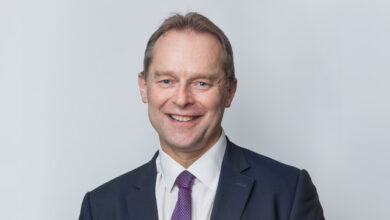Exclusion to inclusion
 With the internet becoming a more important part of everyday life, Emma Blee finds out how close we are to bridging the digital divide.
With the internet becoming a more important part of everyday life, Emma Blee finds out how close we are to bridging the digital divide.
In Ireland 72 per cent of the population uses the internet but the remaining one million people are still digitally excluded.
In 2009, the average internet user spent 13.2 hours a week online, compared with 10 hours a week the previous year, according to the latest ComReg data. However, the profile of internet users shows that the digital divide still remains as they are most likely to be young, students and Dublin-based.
More people in Ireland are also starting to use the internet to shop and make payments. The Irish Bankers Federation and Irish Payment Services Organisation quarterly report highlighted that in 2009 some 34.5 million online payments were processed through the Irish banking system, representing 13 per cent growth compared with 2008.
However, those who do not have the skills or means to access the internet are being left behind as they cannot take advantage of special offers or online-only services.
The most recent policy statement on the digital divide in Ireland was published in the 2009 report ‘Technology Actions to Support the Smart Economy’. It recognised that “higher levels of eInclusion will result in benefits for all and that progressing digital engagement objectives requires action”.
The main areas considered in the report were the availability of digital infrastructure; raising awareness with a view to motivating current non-users; helping people who are less likely to engage; and providing accessibility for people with disabilities.
In Ireland the problem of digital exclusion is dealt with by the Department of Communication, Energy and Natural Resources. A spokesman said that several initiatives have been set up to address the divide.
The main initiative is the ‘BenefIT’ schemes, which assist key target groups such as older people, the unemployed, single or lone parents, people with disabilities and other disadvantaged groups.
Around 42,500 people have taken part in BenefIT so far. Through the scheme the Irish Government works with various sectors of the community to set up IT classes for those who do not have the skills to access the Internet. Some 86 projects have been set up in communities across the country and lessons have also been given on keyboard skills, text messaging and social networking.
Other initiatives include the ‘Log on Learn’ scheme which involves schools and the corporate sector. Transition-year students are ‘buddied-up’ with an older person from their local community to share skills with each other.
Those who are digitally excluded could be missing out on employment opportunities as 90 per cent of new jobs require new skills and most employers now advertise jobs online. Therefore the Government has set out to help the unemployed through a pilot project called ‘WebActivate’. It takes young unemployed people off the live register and provides them with training and support to become self-employed service providers and go on to help small Irish businesses to establish themselves on the internet.
Although the digital divide is getting smaller, European Commissioner Neelie Kroes says more needs to be done. Speaking about Ireland’s digital divide on 12 October she said: “Time is not our friend, it is running out and we have to deliver. Don’t think the digital agenda is only about productivity, it is people, growth, jobs and quality of life; a good fit for Ireland, by doing more with less.
“More than one million Irish people have never used the internet, they need to be part of the digital era and contribute to economic recovery.”





